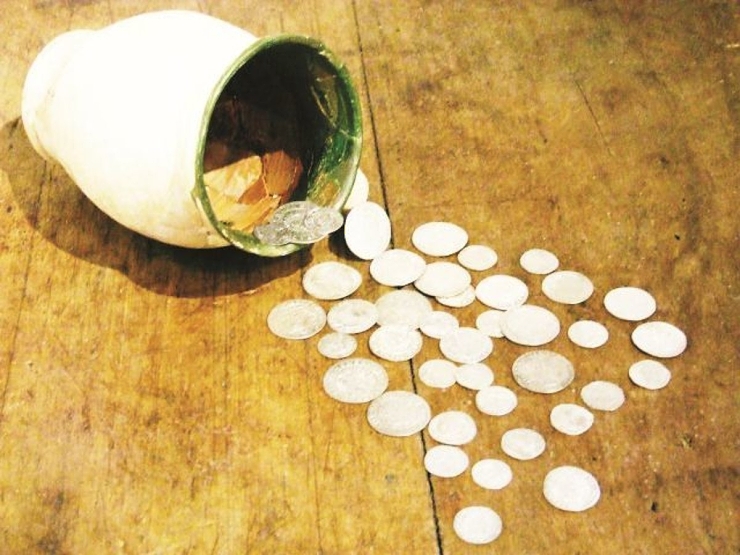Paráda 
May 1, 2000 A pensioner found 1,658 silver coins
Categories: Treasures , Finds and rescue research in the Czech Republic , Calendar

A 70-year-old pensioner from Kysuc, Slovakia, found a real treasure in his garden in 2000. He discovered a clay pot containing 1658 coins. The oldest comes from the reign of Matthias Corvinus.
The lucky finder was Jozef Kubica. He discovered the coin quite by accident as he dug the foundation at the gate of his house. "As I dug with a pickaxe, I hit a pot with coins straight away," said Kubica at the time, who found the largest find to date in the village of Kysuce and its surroundings.
Because the finder was honest, he was rewarded. And that is ten percent of the estimated price. However, if he sold the treasure on the black market, he could get up to hundreds of thousands. The pitcher of coins was probably hidden from the robbers by a rich businessman. Little did he know, however, that they would lie in the ground for over 300 years.
The oldest coin of the depot is a denarius from the reign of Matthias Corvinus from 1489, the youngest three-threesome Leopold I from 1677. The most represented are the coins of the Polish King Sigismund III. (1587 to 1705), exactly 263 pieces. They were commonly used by Central Europeans in the sixteenth and seventeenth centuries. In the depot, experts found coins with rather lower denominations. The golden floren or silver tolar did not contain treasure.
After finding the coins, they traveled to the Kysucké Museum, where they were subjected to cleaning procedures, for example in the form of a bath in phosphoric acid. "It simply came to our notice then. We recalculated the coins several times before reaching the final number. The cleaning itself was also difficult, because the coins had a different composition and each had a different degree of oxidation. Various chemicals were used for the treatment, "recalls Miloš Jesenský, director of the Kysucké Museum.
Even after cleaning the first few hundred coins, the initial assumptions of the experts were confirmed. "The view of the portraits of the Hungarian monarch Fernando III, his successor Leopold I and the Polish king Sigismund left no one in doubt that part of the coins came from the period between 1623 and 1679," Jesenský also remarked.
Ján Hunka, a numismatist at the Institute of Archeology in Nitra, undertook his expertise. His task was to analyze the composition of the treasure. "The theory that the coins were hidden by a trader is supported by the fact that they were located near a busy road connecting Hungary, Silesia and Poland in the past," Jesenský recalled.
Sources: www.sme.sk, www.tn.cz, http://www.novinyknm.sk/
The article is included in categories:







